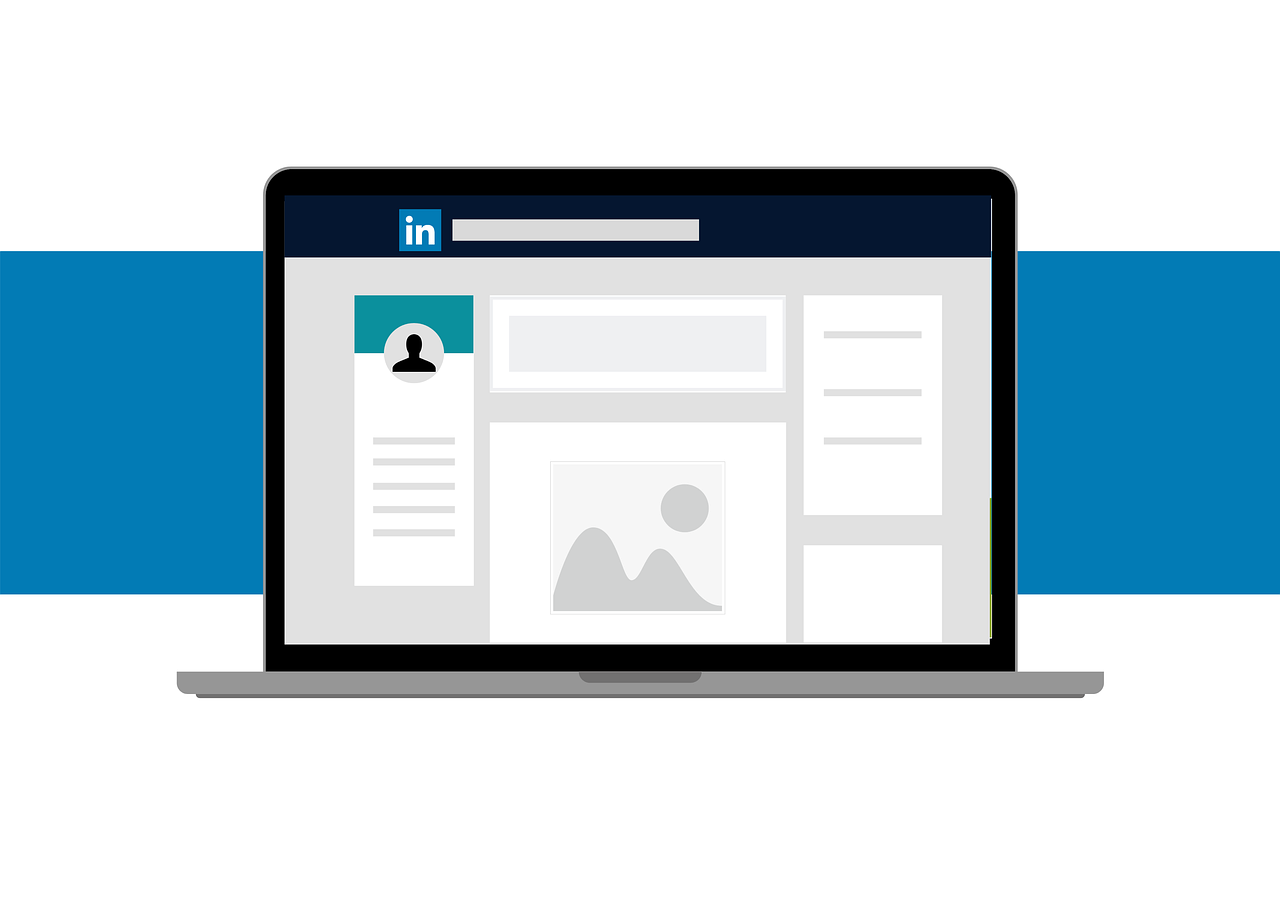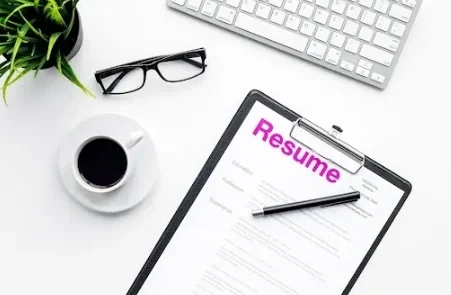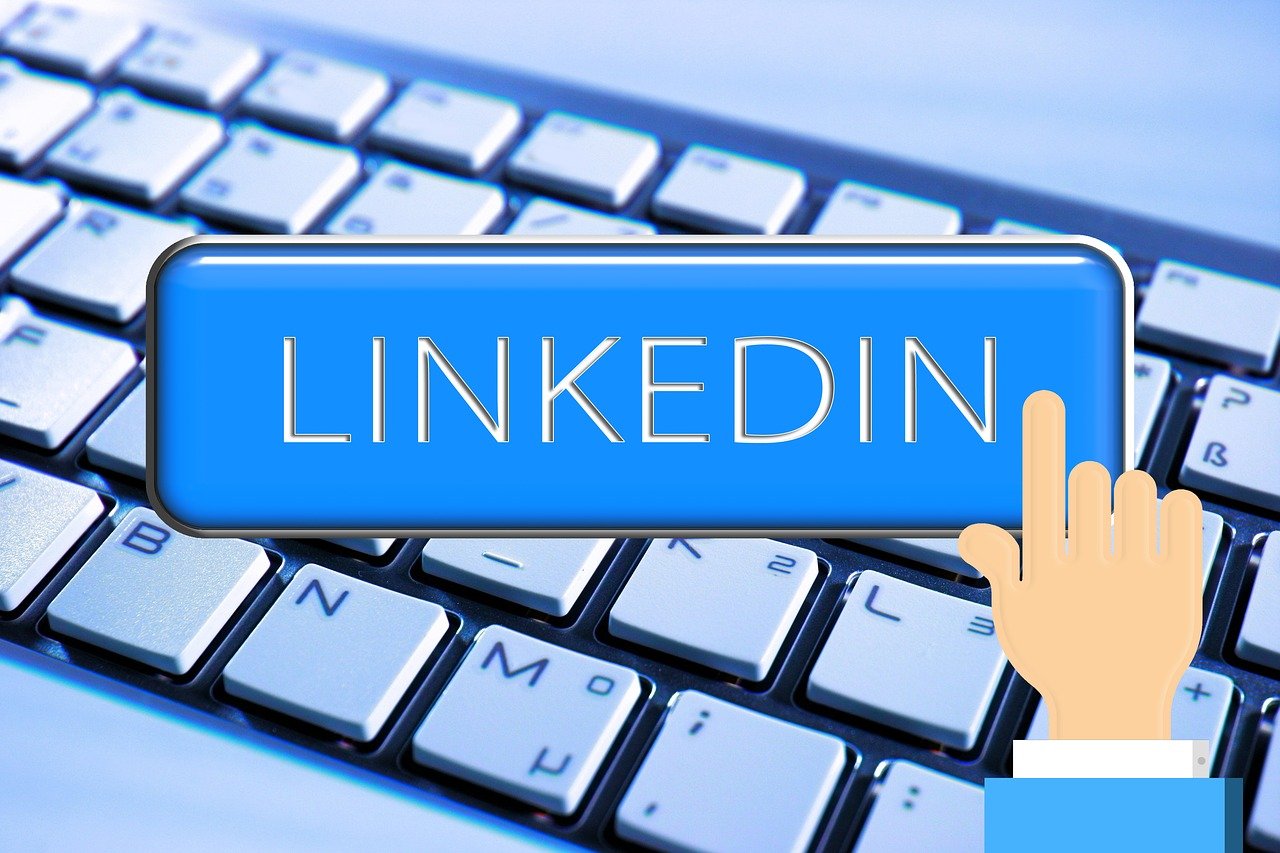Blog
5 Proven Strategies to Send LinkedIn Invitations That Get Accepted
1. Personalization: The Key to Successful Connection Requests
Personalized connection requests are crucial for achieving higher acceptance rates on LinkedIn. When you tailor your messages, it shows the recipient that you’ve taken the time to understand their profile and have a genuine interest in connecting.
Why Personalization Matters
Sending a generic connection request without a message often results in being ignored or declined. However, when you personalize your request, you stand out from the crowd and make a memorable first impression.
How to Reference Shared Interests or Mutual Connections
To craft an effective personalized message, consider referencing:
- Shared interests: Mention any common hobbies, professional interests, or topics you both share.
- Mutual connections: Highlight any mutual contacts to create an instant sense of familiarity.
- Specific aspects of their profile: Point out something unique about their experience or recent achievements that caught your eye.
Examples of Effective Personalized Messages
- Shared Interests- Hi [Name], I noticed we both share a passion for digital marketing. I’d love to connect and exchange insights on the latest industry trends.
- Mutual Connections- Hi [Name], I see we’re both connected to [Mutual Connection]. Given our shared network and similar roles in project management, I believe we could benefit from connecting.
- Profile Highlights- Hi [Name], I was impressed by your recent article on AI in healthcare. As someone who works in health tech, I’d love to connect and discuss this further.
Leveraging Your LinkedIn Profile for Career Advancement

While crafting personalized connection requests is important, it’s equally essential to ensure that your own LinkedIn profile is appealing to potential connections. This is especially relevant if you’re seeking opportunities at the mid-senior level, where competition can be fierce.
Moreover, having a well-structured profile can serve as a digital resume that showcases your skills and experiences effectively. If you’re looking for tips on how to create a standout resume tailored to specific employer preferences such as those in Phoenix, consider checking out this guide on creating a standout resume for Phoenix employers.
By implementing these personalized approaches and optimizing your LinkedIn profile, you significantly increase the likelihood of your invitations being accepted and enhance your networking endeavors overall. Tailored messages demonstrate genuine interest and effort, making your networking endeavors more successful.
2. Leveraging Engagement Triggers for Better Results
Profile views can be a powerful engagement strategy when used correctly. LinkedIn notifies you when someone visits your profile, presenting an opportunity to initiate a connection request. By referencing their visit, you create a natural conversation starter.
Utilizing LinkedIn’s Profile View Feature
When someone views your LinkedIn profile, it indicates a potential interest in your professional background. This makes profile view notifications an excellent engagement trigger for sending connection requests. A simple message like:
“Hi [Name], I noticed you recently viewed my profile and wanted to connect. I’m always looking to expand my network with professionals in [industry].”
Crafting Connection Requests Based on Recent Profile Visits
Tailoring your requests based on profile visits establishes relevance and personal connection. Mentioning the recent visit can pique the recipient’s interest and prompt them to accept your invitation more readily. For example:
“Hello [Name], I saw that you recently checked out my profile. I believe we have common interests in [specific field or topic], and I’d love to connect and possibly collaborate.”
Impact of Establishing Engagement Before Sending a Request
Engagement prior to sending a connection request can significantly increase acceptance rates. When you interact with someone’s content—like commenting on their posts or sharing their articles—it shows genuine interest and helps build rapport before reaching out.
- Comment on Posts: Engage with their recent posts or articles by leaving thoughtful comments.
- Share Content: Share their content with your network and tag them, which could make them more likely to recognize you.
- Send a Follow-Up Message: After engaging with their content, send a follow-up message referencing this interaction.
By leveraging these engagement triggers, you not only stand out but also establish a meaningful connection that goes beyond just adding another contact to your network.
For more insights on how to enhance your LinkedIn profile and improve your networking skills, check out these valuable resources from NimoHR’s blog.
3. Establishing Professional Context in Your Invitations

Clearly stating your professional background and goals is crucial when reaching out to someone new on LinkedIn. This helps the recipient understand who you are and why connecting with you would be beneficial.
- Professional Background
Start by briefly introducing yourself, including your current role and company. This sets a transparent foundation for the connection.
Example: “Hi [Name], I’m [Your Name], a Marketing Manager at [Company].”
- Goals for Connection
Explain what you hope to achieve by connecting. Whether it’s sharing insights, collaborating on projects, or simply expanding your network, being clear about your intentions makes your request more genuine.
Example: “I am looking to connect with professionals in the marketing industry to exchange ideas and best practices.”
Building rapport by mentioning common industry or location factors can significantly increase the chances of your request being accepted. Commonalities create an immediate bond and make your invitation feel more personal.
- Industry Connections
If you share the same industry, highlight this in your message. It shows that you have mutual interests and can potentially offer value to each other.
Example: “I noticed we both work in the tech industry and thought it would be great to connect.”
- Location Factors
Mentioning geographical commonalities can also help build a connection. Whether you’re from the same city or region, this gives a local touch to your outreach.
Example: “I see you’re also based in San Francisco; it’s always great to connect with local professionals.”
These strategies not only establish a professional context but also show that you’ve put thought into why you want to connect. Using these techniques will make your LinkedIn invitations stand out and increase their acceptance rates.
Additionally, if you’re looking to enhance your professional profile further, consider exploring resources on how to build a strong resume or reshaping your resume for a new career path.
4. Avoiding Generic Requests: Stand Out from the Crowd
Sending generic invitations on LinkedIn is a common mistake that can significantly reduce your acceptance rates. When you send a connection request without a personalized message, it often gets lost in the sea of similar requests. People are more likely to ignore or decline these generic invitations because they don’t see any compelling reason to connect.
To increase your chances of acceptance, it’s crucial to show genuine interest in the recipient’s work or achievements. Here are some strategies you can use:
- Highlight Specific Achievements: Mention specific projects or accomplishments that caught your eye. This not only shows that you’ve taken the time to review their profile but also makes your request feel more sincere.
- Reference Shared Interests: If you share common interests or professional goals, bring them up in your message. For example, if you’re both involved in digital marketing, mention a recent article they published on the topic and express your admiration.
- Mutual Connections: Point out any mutual connections you might have. This can serve as a bridge and make the recipient more comfortable accepting your request.
Examples of Personalized Messages
- “Hi [Name], I came across your profile while researching industry leaders in digital marketing. Your recent article on SEO strategies was incredibly insightful. I’d love to connect and learn more about your work.”
- “Hello [Name], we both attended the [Industry Conference] last month. I found your presentation on blockchain technology fascinating and would like to stay connected to discuss potential collaborations.”
These approaches not only help you stand out but also demonstrate that you’re approaching the connection with clear intent and respect for the other person’s professional journey.
Neglecting to personalize your connection requests can lead to missed opportunities and hinder your networking efforts. Taking a few extra minutes to craft a thoughtful message can make all the difference in building meaningful professional relationships on LinkedIn.
5. Strategic Networking: Managing Your Connection Requests Wisely
Understanding LinkedIn’s connection limits is crucial for an effective outreach strategy. LinkedIn imposes a limit on the number of connection requests you can send to prevent spam behavior. Exceeding these limits can result in your account being temporarily restricted, which hampers your networking efforts.
To avoid being flagged as spam, consider the following strategies:
- Space Out Requests Over Time: Instead of sending numerous connection requests in a short period, spread them out over days or weeks. This approach mimics natural networking patterns and reduces the risk of your account being flagged.
- Prioritize Quality Over Quantity: Focus on sending high-quality, personalized connection requests that are more likely to be accepted. Personalized messages demonstrate genuine interest and increase acceptance rates.
- Monitor Your Pending Requests: Regularly review and manage your pending connection requests. Withdraw any requests that have been pending for an extended period to maintain a clean and manageable outreach list.
Strategic networking involves balancing quantity with quality. By spacing out your connection requests and prioritizing personalization, you enhance your professional network effectively without risking your account status.
Conclusion: Mastering the Art of Inviting People on LinkedIn for Professional Growth
Embrace these proven strategies to enhance your effective networking on LinkedIn:
- Personalize each connection request to resonate with the recipient.
- Use engagement triggers like profile views to initiate conversations.
- Establish a professional context that clearly states your goals and background.
- Avoid generic requests by showing genuine interest in the recipient.
- Manage your connection requests wisely to avoid being flagged as spam.
Implementing these tactics can significantly improve your acceptance rates, helping you build a stronger, more meaningful network. Start refining your approach today and watch your LinkedIn connections grow.
Latest Posts
- How to Write Engaging LinkedIn Articles That Build Your Brand
- How to Perfectly Align Your LinkedIn Profile with Your Resume
- How to Update Your Resume for 2025: Expert Tips from NimoHR
- Expert Resume Formatting Tips to Beat Applicant Tracking Systems (ATS)
- Industry-Specific CV Writing: Why One-Size-Fits-All Doesn’t Work
- How a Professionally Written CV Can Speed Up Your Job Search
- Why LinkedIn Profile Optimization is the Secret to Standing Out in a Competitive Job Market
- How a LinkedIn Profile Writer Can Transform Your Online Presence
- Enhancing Your Job Application: The Value of a Cover Letter Review Service
- Common Mistakes in Cover Letters and How Professional Services Can Help
- Overcoming Common Interview Challenges: Gaps in Employment and Career Transitions
- The Role of Non-Verbal Communication in Job Interviews
- Mastering the Salary Conversation: Essential Strategies for Effective Negotiation
- Choosing Between Quitting and Getting Fired: What’s Best for Your Career?
- Mastering LinkedIn Skills: How to Choose the Best Skills for Career Growth
- Crafting the Perfect Cover Letter for an Internal Position: A Step-by-Step Guide
- Did You Know? Your Resume Reference Page Could Make or Break Your Job Application
- Crafting a Layoff Notice: Effective Communication During Work Shortages
- Mastering Behavioral Interview Questions: Tips and Examples
- In-Demand Skills for 2024: What to Include on Your Resume
- Navigating Career Transitions: Reshaping Your Resume for a New Path
- How to Optimize Your LinkedIn Profile
- Cracking the Job Interview: Insights from NimoHR’s Interview Preparation Sessions
- Using LinkedIn Articles to Showcase Your Expertise
- Creating a Standout Resume for Phoenix Employers: Tips on crafting a resume tailored to the preferences of local Phoenix employers
- Resume Trends for 2024: What You Need to Know
- From First Impression to Final Question: Excelling at the Four Key Interview Evaluation Points
- Behind the Screens: Understanding the Role of ATS in the Hiring Process
- How to Create the Perfect Executive LinkedIn Profile?
- How to Write a Cover Letter That Gets You the Job You Want
- How To Build A Resume
- Get Professionally Written Resumes And LinkedIn Profiles
- Top 5 Reasons To Avail Of LinkedIn Resume Writing Services
- Helpful Tips For Writing A Perfect Cover Letter
- How to Ace Your Next Interview
- 15 Things To Leave Off Your Resume
- Applying Strategically and Networking
- Effective Interview Strategies
- The Best Job-Board Sites
- 4 Simple Signs That You Should Quit Your Job
- The most common interview questions & the best way to answer them
- How to beat those pesky Applicant Tracking Systems
- Jump-start your career during the COVID-19 crisis
- Questions to ask in an interview
- Career consulting ROI. Why you should purchase a professional resume writing services
- The Importance of a Company Culture and HR’s Role
- Why companies should offer outplacement services and career coaching
- Interview Tips: Back to the Basics
Categories
Related Posts

How to Write Engaging LinkedIn Articles That Build Your Brand
LinkedIn is more than a networking platform—it’s a place to share insights, build authority, and grow your personal brand. Knowing how to write engaging LinkedIn articles can amplify your voice, attract job opportunities, and establish you as an industry thought leader. Whether you’re working with a LinkedIn profile optimization service or looking to boost your… Continue reading How to Write Engaging LinkedIn Articles That Build Your Brand
Read More
How to Perfectly Align Your LinkedIn Profile with Your Resume
Why Alignment Matters Your LinkedIn profile and resume should tell the same story—but tailored for different audiences. While your resume is targeted toward specific job applications, your LinkedIn profile is a living, breathing summary of your career. In today’s job market, hiring managers often look at both. A mismatch can raise red flags. That’s… Continue reading How to Perfectly Align Your LinkedIn Profile with Your Resume
Read More
How to Update Your Resume for 2025: Expert Tips from NimoHR
Updating your resume for 2025 requires more than just listing your latest job. With applicant tracking systems (ATS) becoming more sophisticated, you need to format and write your resume strategically to stand out. At NimoHR, we specialize in helping professionals craft impactful resumes that pass ATS filters and impress hiring managers. If you’re ready to… Continue reading How to Update Your Resume for 2025: Expert Tips from NimoHR
Read More